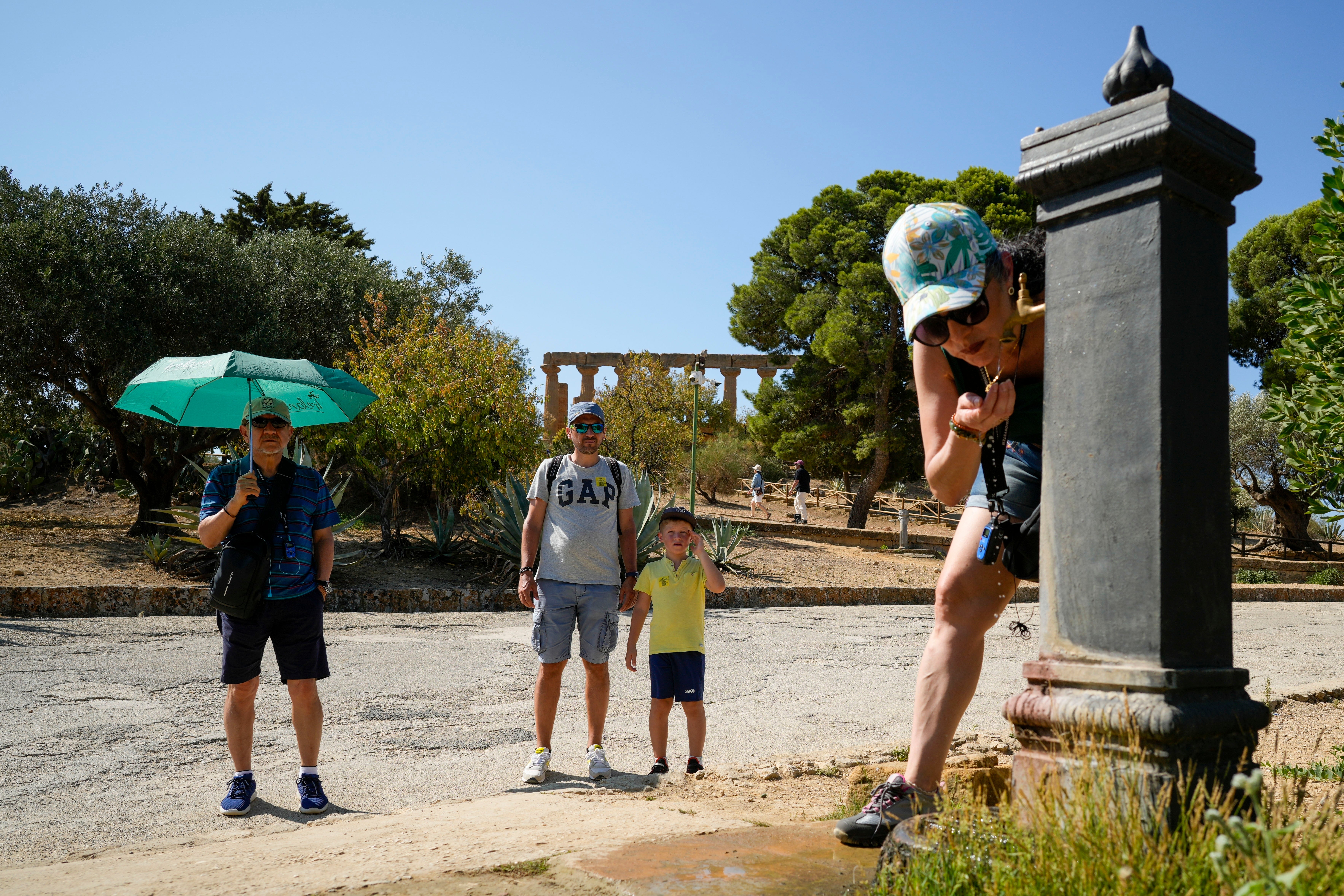Lakes are dry and fields are scorched, but unlike elsewhere in Europe, water is still gushing for tourists in Sicily.
After an almost totally rain-free year on the Italian island, fountains inside Agrigento’s famous archaeological park are still flowing, and pools in rows of hotels are full.
Like many Mediterranean islands, people in Sicily are used to long spells without rain, but human-caused climate change has made weather more erratic, and droughts can be longer and more frequent. Islanders are surviving as they have for decades – they store as much as they can in cisterns and use tankers to deliver water – and do it so well visitors that don’t feel the difference.
But this year, the drought has gotten so bad that it’s putting residents at even greater risk, even as water still flows to hotels and tourist sites.
The drought is punishing. The local water basin authority has tightly rationed water for almost a million residents – they are allowed as little as two to four hours a week — to get through the summer. On Friday, the first Italian navy tanker ship arrived to supply 12 million liters (3.2 million gallons) of water to the most affected residents.

But Agrigento residents are among the most drought-resilient in Italy, and even with rationing, they still run their businesses, hotels, bed-and-breakfasts, and households without missing a shower, neglecting their garden or closing the swimming pool.
“Nobody can cope with water shortage better than southern Sicilians,” said Salvatore Cocina, head of the local civil protection, who has the hard task of coordinating what little water is left on the island.
Water scarcity is not new as southern Sicily’s terrain does not hold much water and the aqueducts are leaking. The region is also prone to dry spells, particularly in the summer.
Most residents own a private cistern that can hold at least a thousand liters (264 gallons) of water. The city’s rooftops are dotted with large plastic tanks, and just as many are underground in gardens and basements.
Despite the water emergency, tourists continue to flock to the beautiful beaches of southern Sicily and line up to admire the vestiges of ancient Greek…
Click Here to Read the Full Original Article at The Independent Travel…
